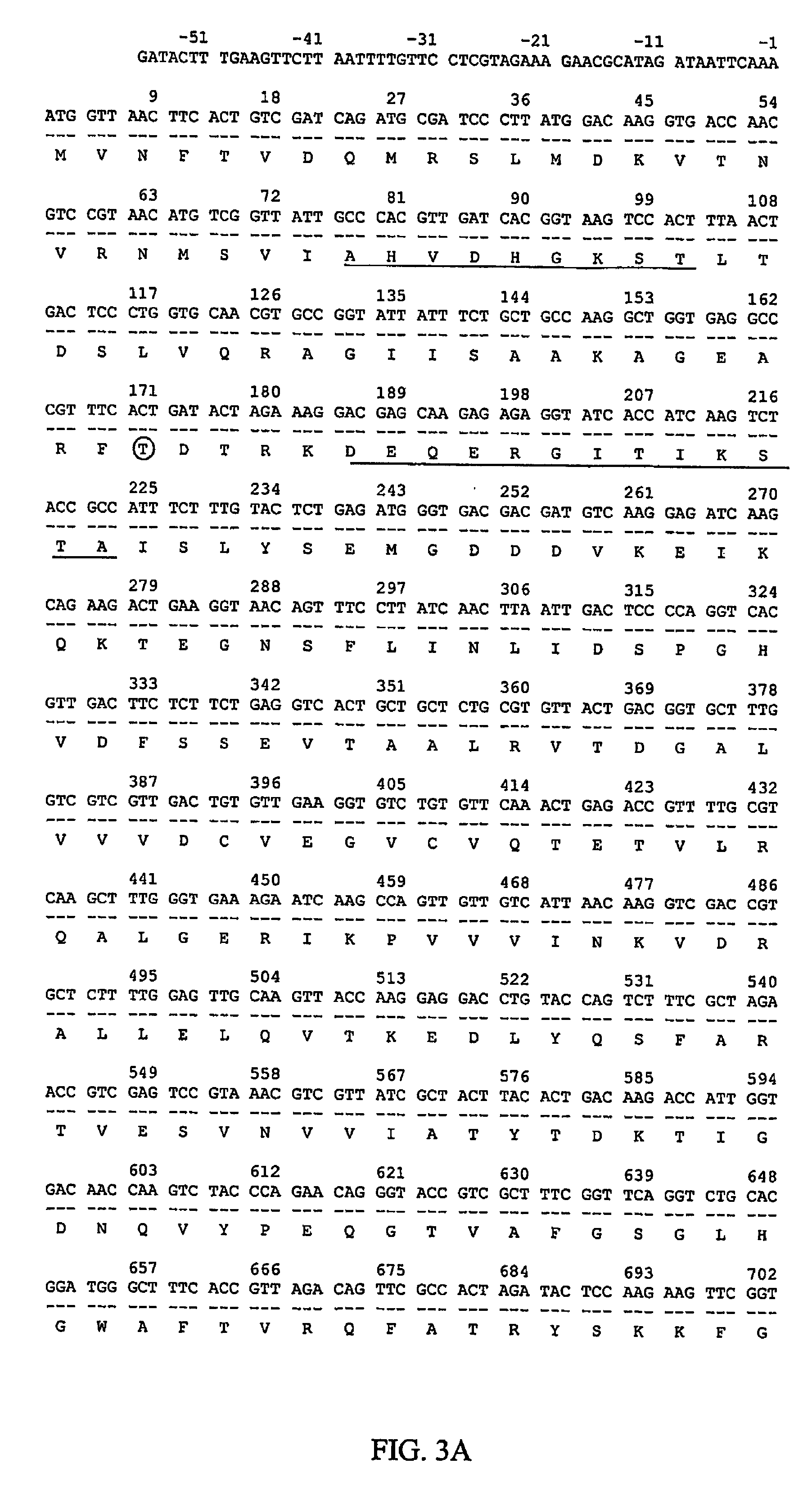Methods for expression and purification of immunotoxins
a technology of immunotoxins and purification methods, applied in the field of protein expression and purification, can solve the problems of large side effects of immunosuppressive therapy, increased risk of malignancy, and increased risk of infection in recipients
- Summary
- Abstract
- Description
- Claims
- Application Information
AI Technical Summary
Benefits of technology
Problems solved by technology
Method used
Image
Examples
example 1
Transformation with a Mutagenizing Oligonucleotide
[0123]The oligomer of 56 nucleotides (see List of Primers) contains two point mutations to change amino acid 701 from glycine to arginine. A mutagenizing oligo (56 mer, 100 ug) was co-transformed into the GS200 (Mut+, His−, Arg−) strain with an ARG4 DNA fragment. The ARG4 gene with promoter was taken from plasmid PMY30 (supplied by Prof. Jim Cregg, Keck Graduate Institute of Applied Life Sciences, Claremont, Calif. 91711) by Sph I and EcoR V. Approximately 1000 transformants were obtained. To screen for mutated clones having the correct mutations, diagnostic PCR with primers mdb1EF-2 and 2253EF-2C was employed. The mutation-detecting primer (mdb1EF-2) can distinguish a difference in DNA sequence between the normal gene and the mutated gene at amino acid 701. For the normal gene, a PCR product could not be produced because 2 nucleotides at the 3′ end were not matched with the DNA sequence of the normal gene, preventing extension by th...
example 2
Spheroplast Transformation with the Partial Fragment of Mutated EF2 and ARG4 Fragment
[0128]In the methods of Example 1, there was no selection step against wild type DT. A double transformation was thus employed. First, the mutated EF-2 fragment was transformed into the GS200 strain by electroporation. Then, electroporated cells were cultivated overnight to allow the expression of mutated EF-2 inside cell. Cultivated cells were used for making spheroplasts. The resulting spheroplasts were treated with wild type DT (200 μg / ml) and ARG4 fragment (10 μg) for 1 hour and transformed by CaCl2 and PEG. Only a few transformants of normal colony size were obtained and there was no mutated strain. In addition, there were 100 or more micro-colonies obtained. 100 of these were screened but the mutated strain was not detected.
example 3
Cloning and Sequencing of EF-2 Gene from Pichia pastoris
[0129]Prior to the cloning of the full sequence of the Pichia pastoris EF-2 gene, a partial sequence had been obtained. Initially, the conserved R domain of Pichia pastoris EF-2 was amplified from the genomic DNA using two primers derived from the same region of S. cerevisiae EF-2 (Perentesis et al., 1992). The 5′ primer contained the sequence from position 1933 to 1962 of S. cerevisiae EF-2, whereas the 3′ primer was complementary to the region of 2227 to 2256. The sequence of 324 nucleotides was then extended towards the 5′ end to position 284 and the 3′ end to position 2289 in the coding region of Pichia pastoris EF-2 gene. The extended sequence was later found to contain several mistakes. To clone the entire Pichia pastoris EF-2 gene, two species of cDNA were first synthesized separately from EF-2 mRNA with two different primers. Primer dT22-Not contains a run of 22 T residues complementary to the 3′polyA tail of the mRNA ...
PUM
| Property | Measurement | Unit |
|---|---|---|
| temperature | aaaaa | aaaaa |
| temperature | aaaaa | aaaaa |
| temperature | aaaaa | aaaaa |
Abstract
Description
Claims
Application Information
 Login to View More
Login to View More - R&D
- Intellectual Property
- Life Sciences
- Materials
- Tech Scout
- Unparalleled Data Quality
- Higher Quality Content
- 60% Fewer Hallucinations
Browse by: Latest US Patents, China's latest patents, Technical Efficacy Thesaurus, Application Domain, Technology Topic, Popular Technical Reports.
© 2025 PatSnap. All rights reserved.Legal|Privacy policy|Modern Slavery Act Transparency Statement|Sitemap|About US| Contact US: help@patsnap.com



